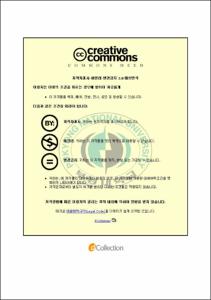정보구조 이론을 이용한 피동문 번역
- Alternative Title
- Passive sentence translation based on Informational structure theory:English-Korean translation
- Abstract
- 본 논문은 피동문과 관련한 영한 번역을 고찰하는데 목적이 있다. 이를 위해 정보구조 이론을 피동문 번역에 적용해 보았다.
본격적인 논의에 앞서 피동문의 문법체계와 기능을 살펴보았다. 문법체계에 있어서는 한국어의 피동문 체계에 중점을 두었다. 영어에 비해 한국어의 피동문에는 제약이 심하기 때문에 이를 잘 알아둘 필요가 있기 때문이다. 기능은 구정보·신정보, 탈초점화, 정서적 기능에서 양언어의 피동문이 어떻게 다른지 대조했다.
정보구조 이론에 따르면 번역시에 문법보다 원문의 정보구조를 도착어에 제대로 반영하는 것이 중요하다. 정보구조 이론은 문장에는 통사구조, 의미구조, 음운구조 등의 문법구조 이외에 정보전달을 위한 정보구조가 있다는 것이다. 통사구조, 의미구조, 음운구조 등은 정보구조를 실현하기 위한 장치가 된다. 영어와 한국어 피동문의 정보구조는 상이한 것으로 유추된다. 영어의 피동문은 ‘주제-서술’, ‘주제-초점’이라는 정보구조를 실현하기 위한 통사적 방법이다. 즉, 영어의 피동문은 기지의 사실에서 미지의 사실을 전달하기 위한 문법장치이다. 따라서 영어 피동문을 한국어로 번역할 때 영어 피동문의 정보구조가 반영되는 문법구조로 바꾸어 주는 것이 중요한 문제가 된다.
This study shows that English passive sentences should be translated into Korean based on Informational structure theory. Especially the theme-rheme and the theme-focus, constituents of Informational structure theory, are applied into the translation.
According to the Informational structure theory, the English passive sentences are typical ones to express the theme-rtheme or the theme-focus. To convey the theme-rheme or the theme-focus on Korean texts, -은/는, a theme marker, and the sentence order can be taken into consideration. Patients of English passive sentences to which -은/는 is attached are put in the beginning of the sentence. Agents are behind verbs.
In chapter 4, the passive sentence translations of the Language Instinct by Steven Pinker were examined on the view of the informational structure theory. The analysis was limited to ‘by + agent’ phrases. It revealed that some syntax-oriented translations make it hard to understand the original message. After the Informational structure theory was applied into the translation, the translation became more readable in a sense, because the translation followed the logical flow of the English text.
This study showed that the Informational Structure Theory can make up for the weak points in the current English-Korean passive translation.
- Issued Date
- 2007
- Awarded Date
- 2007. 2
- Type
- Dissertation
- Publisher
- 부경대학교 대학원
- Alternative Author(s)
- Seo, Ae-Kyung
- Affiliation
- 부경대학교 대학원
- Department
- 대학원 국어국문학과
- Advisor
- 박영준
- Table Of Contents
- 1. 서론 = 1
1.1. 연구 목적 = 1
1.2. 연구 대상 및 연구 방법 = 3
1.3. 우리말과 번역 = 4
1.4. 선행연구 = 8
2. 피동문의 형식과 기능 = 13
2.1. 피동문의 형식 = 15
2.1.1. 피동문 피동자 = 15
2.1.2. 피동문 동사 = 16
2.1.2. 피동문 행동자 = 21
2.2. 피동문의 기능 = 29
2.1.1. 구정보와 신정보 = 30
2.1.2. 탈초점화 = 32
2.1.2. 정서적 기능 = 33
3. 정보구조 이론에 의한 피동문 번역 = 36
3.1. 정보구조 이론 = 38
3.1.1. 정보 = 39
3.1.2. 정보구조의 구성요소 = 40
3.1.3. 정보구조와 영어 피동문 = 41
3.2. 정보구조와 피동문 번역 = 44
4. 피동문 번역의 실제 = 47
4.1. 피동문 행동자의 번역 양상 = 48
4.1.1. ‘~(으)ㅁ으로써’ = 49
4.1.1. ‘~에 의하여’ = 53
4.2. 정보구조에 따른 피동문 번역 = 57
4.2.1. 주제 표지 = 59
4.2.2. 피동문 행동자의 문장 내에서 위치 = 63
5. 결론 = 69
참고 문헌 = 71
- Degree
- Master
- Files in This Item:
-
-
Download
 정보구조 이론을 이용한 피동문 번역.pdf
기타 데이터 / 746.07 kB / Adobe PDF
정보구조 이론을 이용한 피동문 번역.pdf
기타 데이터 / 746.07 kB / Adobe PDF
-
Items in Repository are protected by copyright, with all rights reserved, unless otherwise indicated.